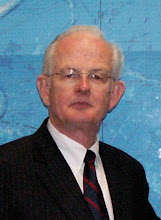Since the days of Adam there has been only one true Priesthood on the earth, and that is “the Holy Priesthood, after the Order of the Son of God. But out of respect or reverence to the name of the Supreme Being, to avoid the too frequent repetition of his name, they, the church, in ancient days, called that priesthood after Melchizedek, or the Melchizedek Priesthood” (Doctrine and Covenants 107:3-4). “All Priesthood is Melchizedek, but there are different portions or degrees of it” (Teachings of the Prophet Joseph Smith, 180). Thus the Levitical or Aaronic Priesthood is imbedded in the Melchizedek Priesthood.
“The Priesthood in general is the authority given to man to act for God” (Joseph F. Smith, Gospel Doctrine, 136). Once the Melchizedek Priesthood is conferred upon a man, he cannot receive any greater Priesthood given that there is none. If he is ordained an Elder at the time the Priesthood is conferred upon him, then during his lifetime, he may receive other callings and ordinations in the Priesthood, but he will never receive more Priesthood. The other offices of the Melchizedek Priesthood to which he may be ordained are Seventy, High Priest, Patriarch, Apostle, and Presidency of the High Priesthood, otherwise known as the First Presidency of The Church of Jesus Christ of Latter-day Saints.
Once the Melchizedek Priesthood has been bestowed upon a man, he has the authority to, among other things, baptize and confirm new members of the Church and may confer the Priesthood upon other men. However, the Lord’s house is a house of order. Thus “it is necessary that every act performed under this authority [the Melchizedek Priesthood] shall be done at the proper time and place, in the proper way, and after the proper order. The power of directing these labors constitutes the keys of the Priesthood” (Gospel Doctrine, 136). All of the Priesthood keys are held and exercised by one man only namely, the President of the High Priesthood, the President of The Church of Jesus Christ of Latter-day Saints. In order that he might properly administer the Kingdom of God on the earth, he must delegate the exercise of some of these keys to others in order that the Lord’s work may go forth in the earth. As each member of the Quorum of the Twelve Apostles was ordained to that position, all of the Priesthood keys were conferred upon him, but only the President of the High Priesthood may direct the exercise of these keys at any given moment.
So it is that these Priesthood keys are disseminated down through the various administrative levels of Church government until the appropriate ones are conferred upon each functioning stake president, each functioning bishop, and each Melchizedek and Aaronic Priesthood quorum president. A stake president is the presiding Melchizedek Priesthood authority in his stake. As such, he alone possesses the keys necessary to determine when, where, and how each Melchizedek Priesthood ordinance will be performed within his jurisdiction. In the same manner, a Bishop is the presiding Aaronic Priesthood authority in his ward. He alone possesses the keys necessary to determine when, where, and how each Aaronic Priesthood ordinance will be performed within his ward’s boundaries.
Thus it is through the proper exercise of Priesthood keys that order and accountability are maintained in the Lord’s Church in both the organization of the Priesthood as well as its auxiliary organizations.

No comments:
Post a Comment